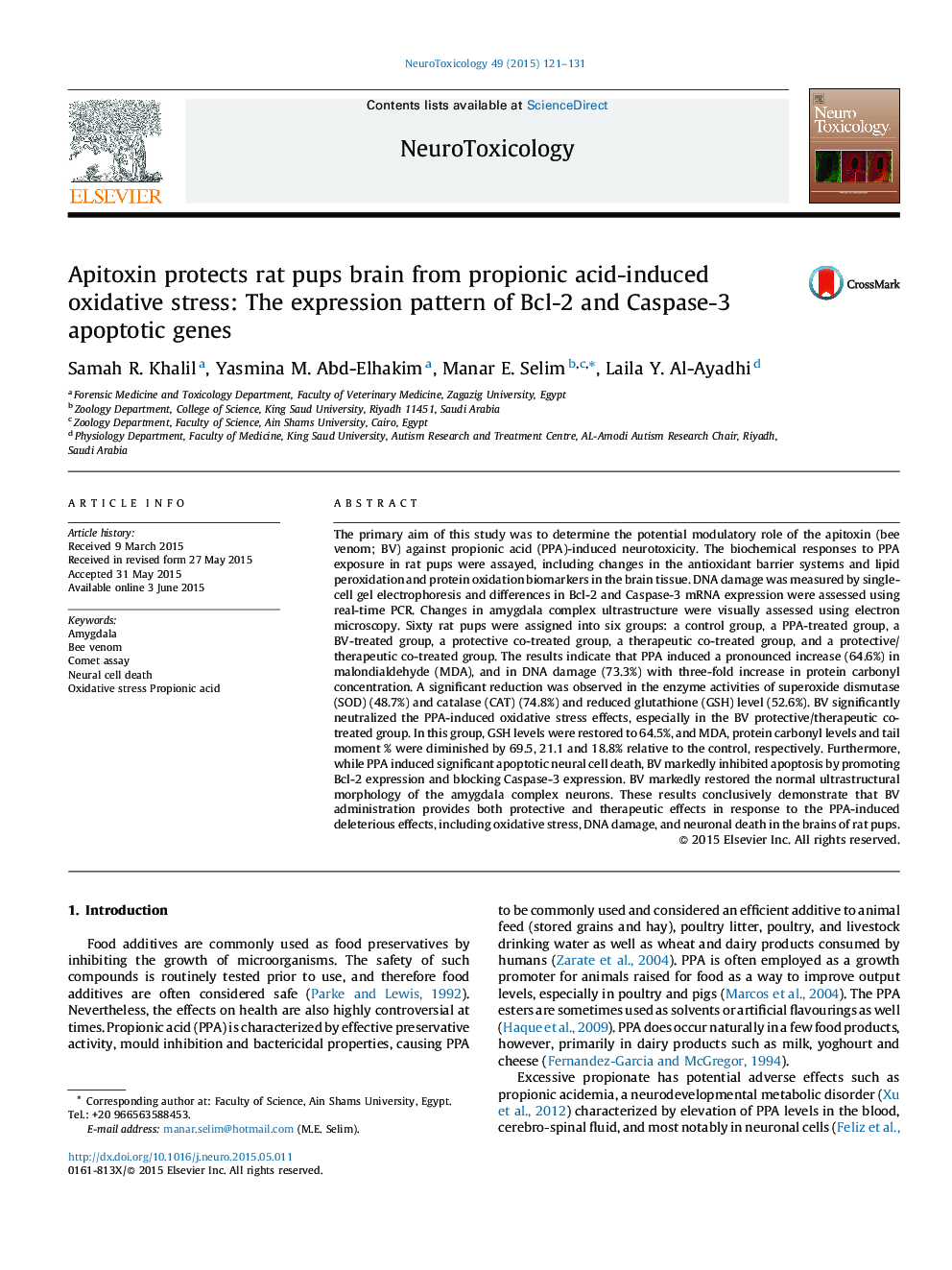| Article ID | Journal | Published Year | Pages | File Type |
|---|---|---|---|---|
| 2589558 | NeuroToxicology | 2015 | 11 Pages |
•Propionic acid (PPA) induced neurotoxic and oxidative stress biomarkers alterations.•PPA induced ultrastructural alteration in rat pups brain.•PPA promotes cell death through up-regulation of Caspase-3 and down-regulation of Bcl-2 genes.•Apitoxin (bee venom: BV) counteract PPA-induced neurotoxicity by interfering with its oxidative impacts.•BV provides both a protective and therapeutic rationale for use against PPA neurotoxicity.
The primary aim of this study was to determine the potential modulatory role of the apitoxin (bee venom; BV) against propionic acid (PPA)-induced neurotoxicity. The biochemical responses to PPA exposure in rat pups were assayed, including changes in the antioxidant barrier systems and lipid peroxidation and protein oxidation biomarkers in the brain tissue. DNA damage was measured by single-cell gel electrophoresis and differences in Bcl-2 and Caspase-3 mRNA expression were assessed using real-time PCR. Changes in amygdala complex ultrastructure were visually assessed using electron microscopy. Sixty rat pups were assigned into six groups: a control group, a PPA-treated group, a BV-treated group, a protective co-treated group, a therapeutic co-treated group, and a protective/therapeutic co-treated group. The results indicate that PPA induced a pronounced increase (64.6%) in malondialdehyde (MDA), and in DNA damage (73.3%) with three-fold increase in protein carbonyl concentration. A significant reduction was observed in the enzyme activities of superoxide dismutase (SOD) (48.7%) and catalase (CAT) (74.8%) and reduced glutathione (GSH) level (52.6%). BV significantly neutralized the PPA-induced oxidative stress effects, especially in the BV protective/therapeutic co-treated group. In this group, GSH levels were restored to 64.5%, and MDA, protein carbonyl levels and tail moment % were diminished by 69.5, 21.1 and 18.8% relative to the control, respectively. Furthermore, while PPA induced significant apoptotic neural cell death, BV markedly inhibited apoptosis by promoting Bcl-2 expression and blocking Caspase-3 expression. BV markedly restored the normal ultrastructural morphology of the amygdala complex neurons. These results conclusively demonstrate that BV administration provides both protective and therapeutic effects in response to the PPA-induced deleterious effects, including oxidative stress, DNA damage, and neuronal death in the brains of rat pups.
